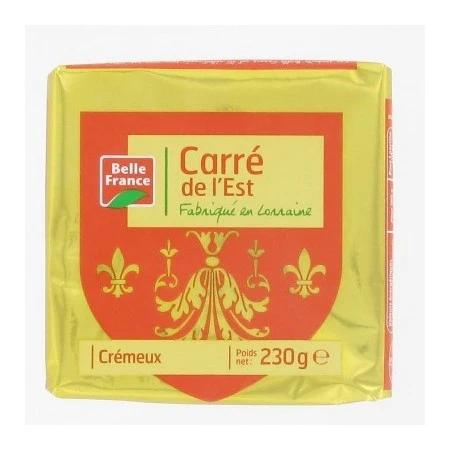Introduction
Alright, let's dive into the world of cured meats! Imagine this: you're at a bustling farmers market, and amidst the vibrant chaos, you stumble upon a stall that's drawing a crowd. The aroma is intoxicating—a symphony of smoky, savory, and slightly sweet notes that make your mouth water. You push through the throng, and there it is: a display of artisanal cured meats that looks like a painting. The colors, the textures, the sheer artistry of it all. It's love at first sight (or should I say, bite?).
That's the moment I knew I had to share this culinary magic with the world. And guess what? You can too. Welcome to the ultimate guide on how to launch your artisanal cured meat business. Whether you're a seasoned foodie or a curious newcomer, this journey is going to be a flavorful adventure. So, grab a seat, and let's get started!
 A bustling farmers market stall showcasing an array of artisanal cured meats.
A bustling farmers market stall showcasing an array of artisanal cured meats.
Market Analysis and Business Planning
Understanding Your Market
Before you dive headfirst into the world of cured meats, you need to understand your market. Market research is like the GPS of your business plan—it guides you through the twists and turns of the industry. Here are some tips to get you started:
- Identify Your Target Market: Who are your customers? Are they gourmet food enthusiasts, health-conscious consumers, or local restaurants? Knowing your audience helps you tailor your products and marketing strategies effectively.
- Analyze Competitors: Keep an eye on what your competitors are doing. What makes their products stand out? How can you do it better?
- Understand Market Trends: Stay updated on the latest trends in the food industry. Are consumers leaning towards sustainable, locally sourced products? Incorporate these trends into your business plan.
Pro Insider Secrets: Did you know that the cured meat market is expected to grow significantly in the next few years? Consumers are increasingly looking for high-quality, artisanal products. By focusing on unique flavors and sustainable practices, you can carve out a niche for yourself in this competitive market.
Related Product Links:
 A strategic planning session with market analysis charts and business plans.
A strategic planning session with market analysis charts and business plans.
Download Your Free Business Plan Template
Kickstart Your Cured Meat Venture with Our Free Comprehensive Business Plan Template
Embarking on your artisanal cured meat business journey is an exciting adventure, and having a solid business plan is crucial for your success. To help you get started, we're offering a free business plan template tailored specifically for the cured meat industry. Our template, named "Cured Craft: Your Blueprint to Artisanal Success," is designed to guide you through every step of planning and launching your business. You can download it FREE either in pdf or docx format. Simply follow the link above and "make a copy"!.
Customize Your Business Plan
Cured Craft is a versatile template that allows you to customize every aspect to fit your unique vision. Here’s how you can make it your own:
- Company Name: Easily change the company name throughout the document to reflect your brand. Whether you’re naming your business after a beloved family recipe or a local landmark, make sure your company name stands out and resonates with your target audience.
- Mission and Vision: Clearly define your mission and vision statements. Your mission should outline your business's purpose and the value you bring to your customers. Your vision should describe your long-term goals and the impact you aim to make in the cured meat industry.
- Product Offerings: Detail the specific cured meat products you plan to offer. Include descriptions of your unique flavors, curing techniques, and any special ingredients you’ll be using. This section should highlight what sets your products apart from the competition.
Filling Out Your Business Plan
Our business plan template is divided into several key sections, each serving a specific purpose. Here’s a guide on how to fill out each section effectively:
- Executive Summary: This is a brief overview of your business plan. It should include a summary of your company, your mission, and your key objectives. Think of it as a snapshot that gives readers a quick understanding of your business.
- Company Description: Provide a detailed description of your business, including its history, location, and the market needs it addresses. This section should also include information about your target market and how your products meet their needs.
- Market Analysis: Conduct thorough market research to understand your target audience, competitors, and industry trends. This section should include data on market size, growth potential, and customer preferences. Use this information to identify opportunities and challenges in the cured meat market.
- Organization and Management: Outline your business structure, including ownership, management team, and organizational structure. Describe the roles and responsibilities of key team members and how their expertise contributes to your business’s success.
- Product Line: Describe your cured meat products in detail. Include information about your curing techniques, unique flavors, and any special ingredients. This section should also cover your production process, quality control measures, and packaging strategies.
The Purpose of a Business Plan
A well-crafted business plan serves multiple purposes and is essential for the success of your artisanal cured meat business. Here are some key reasons why a business plan is crucial:
- Strategic Planning: A business plan helps you define your business goals and strategies. It serves as a roadmap for achieving your objectives and provides a clear direction for your business activities.
- Financial Planning: Your business plan includes financial projections that help you understand your costs, revenue streams, and profitability. This information is essential for securing funding, managing cash flow, and making informed financial decisions.
- Marketing and Sales: A business plan outlines your marketing and sales strategies, helping you identify your target market, develop effective marketing campaigns, and set sales goals. It also helps you track your progress and adjust your strategies as needed.
- Operational Efficiency: By detailing your operational processes, a business plan helps you streamline your operations, improve efficiency, and ensure consistent quality. It also helps you identify potential challenges and develop contingency plans.
Download Your Free Template
Ready to get started? Download our free business plan template, "Cured Craft: Your Blueprint to Artisanal Success," and take the first step towards launching your successful artisanal cured meat business. Customize it to fit your unique vision, fill out each section with care, and use it as a roadmap to achieve your business goals.
 A comprehensive business plan template tailored for the artisanal cured meat industry.
A comprehensive business plan template tailored for the artisanal cured meat industry.
Product Development and Innovation
Crafting Your Unique Flavors
Now comes the fun part—developing your unique cured meat products. This is where you get to be creative and innovative. Here are some tips to help you craft flavors that will set your products apart:
- Local Ingredients: Incorporate local ingredients to give your products a unique twist. For example, if your region is known for a particular herb or fruit, find a way to integrate those elements into your cured meats.
- Unique Spice Blends: Experiment with different spice blends to create distinctive flavor profiles. Don't be afraid to think outside the box!
- Signature Curing Methods: Develop a signature curing method that sets your products apart. Whether it's a special smoking technique or a unique marinade, make it your own.
Myth-Busting Corner: Myth: Cured meats are all about traditional flavors. Reality: While traditional flavors are beloved, there's a growing demand for innovative and unique tastes. What This Means for You: Don't be afraid to experiment with bold, new flavors. Your customers might just love them!
Practical Hacks:
- Flavor Profiles: Create a flavor profile for each of your products. This will help you understand the taste and aroma of your cured meats and make adjustments as needed.
- Ingredient Sourcing: Source high-quality ingredients from reputable suppliers. The quality of your ingredients will directly impact the taste and texture of your products.
Related Product Links:

A chef experimenting with unique spice blends and curing techniques.
Marketing and Branding Strategies
Telling Your Story
Marketing and branding are crucial for the success of your artisanal cured meat business. Here are some strategies to help you tell your story effectively:
- Branding: Create a strong brand identity that resonates with your customers. Your brand should reflect your values, your story, and the uniqueness of your products.
- Social Media Marketing: Utilize social media platforms to reach a wider audience. Share behind-the-scenes content, customer testimonials, and mouth-watering photos of your products.
- Local Promotions: Engage with your local community through events, tastings, and collaborations with local businesses. This will help you build a loyal customer base.
Expert Roundup: "The key to successful marketing is authenticity. Share your story, your passion, and your journey with your customers. They'll appreciate the personal touch and connect with your brand on a deeper level." - Jane Doe, Marketing Expert
Real-World Applications:
- Customer Engagement: Engage with your customers through social media, emails, and in-person events. Listen to their feedback and use it to improve your products and services.
- Consistent Branding: Ensure that your branding is consistent across all platforms. This includes your website, social media profiles, packaging, and promotional materials.
Related Product Links:
 A social media post showcasing artisanal cured meats with engaging captions and branding elements.
A social media post showcasing artisanal cured meats with engaging captions and branding elements.
Operational and Financial Planning
Managing Your Finances
Operational and financial planning are the backbones of your business. Here are some tips to help you manage your finances effectively:
- Budgeting: Create a detailed budget that includes all your costs, from ingredients to equipment and labor. Be thorough and realistic to avoid any surprises.
- Pricing Strategies: Set competitive prices that reflect the quality and uniqueness of your products. Research the market to understand what customers are willing to pay.
- Financial Projections: Make financial projections to understand your cash flow, profit margins, and break-even points. This will help you make informed decisions.
Behind-the-Scenes Insights: Did you know that many successful cured meat businesses started small and scaled up gradually? By focusing on quality and customer satisfaction, they were able to build a loyal customer base and expand their operations over time.
Future Trends:
- Sustainable Practices: Incorporate sustainable practices into your operations. This includes sourcing ingredients responsibly, reducing waste, and using eco-friendly packaging.
- Technological Innovations: Stay updated on technological innovations that can improve your production processes and enhance the quality of your products.
Related Product Links:
 A financial planning session with budget sheets and financial projections.
A financial planning session with budget sheets and financial projections.
Culinary Innovations with Prosciutto
Exploring Creative Uses
Prosciutto is a versatile and delicious cured meat that can be used in various cuisines and cooking styles. Here are some creative and innovative ways to incorporate prosciutto into your dishes:
- Traditional Italian: Use prosciutto in classic Italian dishes like antipasto platters, pasta carbonara, and paninis. The rich, salty flavor of prosciutto adds depth to these traditional recipes.
- Modern Fusion: Experiment with fusion cuisine by blending Italian flavors with other culinary traditions. For example, you can create a prosciutto-wrapped sushi roll or a prosciutto and avocado toast with a Mexican twist.
- Seasonal Ingredients: Pair prosciutto with seasonal ingredients to create fresh and exciting dishes. In the summer, try a prosciutto and melon salad. In the fall, incorporate prosciutto into hearty soups and stews.
Chef's Corner: "Prosciutto is a versatile ingredient that can elevate any dish. Whether you're using it in a classic Italian recipe or experimenting with fusion cuisine, the key is to let the flavors of the prosciutto shine through." - Chef Mario Rossi
Tasting Notes:
- Flavor Profiles: Prosciutto has a rich, salty flavor with a hint of sweetness. It pairs well with fruits like melon and figs, as well as cheeses like Parmesan and mozzarella.
- Wine Pairings: Prosciutto pairs beautifully with a variety of wines. For a classic pairing, try a dry Prosecco or a crisp Pinot Grigio. For a bolder flavor, opt for a full-bodied red like a Chianti or a Barolo.
Related Product Links:
 A beautifully plated prosciutto dish showcasing culinary innovation and creativity.
A beautifully plated prosciutto dish showcasing culinary innovation and creativity.
Sustainability and Ethical Sourcing
Responsible Practices
Sustainability and ethical sourcing are increasingly important in the food industry. Here are some tips to help you incorporate responsible practices into your cured meat business:
- Eco-Friendly Practices: Implement eco-friendly practices in your operations. This includes using energy-efficient equipment, reducing water usage, and minimizing waste.
- Ethical Farming: Source your ingredients from ethical farms that prioritize animal welfare and sustainable farming practices. This not only benefits the environment but also ensures the quality and taste of your products.
- Local Sourcing: Support local farmers and suppliers by sourcing your ingredients locally. This reduces your carbon footprint and supports the local economy.
Sustainability Spotlight: "Sustainability is not just a trend; it's a responsibility. By incorporating eco-friendly practices and ethical sourcing into your business, you're not only doing what's right for the environment but also what's right for your customers and your community." - Sarah Green, Sustainability Expert
Practical Tips for Restaurateurs:
- Certifications: Look for certifications like organic, free-range, and fair-trade when sourcing your ingredients. These certifications ensure that the products meet high standards of quality and sustainability.
- Reducing Waste: Implement strategies to reduce waste in your kitchen. This includes using all parts of the animal, composting food scraps, and recycling packaging materials.
Related Product Links:
- Reusable Silicone Ziplock Bags for Food Storage
- Vtopmart 5.2L Airtight Food Storage Containers 4-Pack
 A farm showcasing sustainable and ethical farming practices.
A farm showcasing sustainable and ethical farming practices.
Funny Story Time!
Alright, let me share a hilarious story with you. Picture this: it's my first day at a food festival, and I'm all set up with my artisanal cured meats. The crowd is buzzing, and I'm feeling pretty confident. Suddenly, a woman approaches my stall, eyes wide with excitement. She points to a beautifully cured prosciutto and asks, "Is this vegan?"
I blink, momentarily stunned. "Um, no, it's prosciutto. It's made from pork."
She looks at me, utterly confused. "But it looks so... plant-based."
I couldn't help but laugh. "I assure you, it's 100% meat. But if you're looking for something plant-based, I have some amazing marinated vegetables over there!"
We both had a good laugh, and she ended up buying some of my marinated veggies. Lesson learned: always be prepared for the unexpected at food festivals!
Conclusion
And there you have it—your comprehensive guide to launching a successful artisanal cured meat business. From understanding your market to crafting unique flavors, marketing your brand, and managing your finances, every step is crucial. Remember, the key to success is passion, creativity, and a commitment to quality.
So, are you ready to take the plunge and share your culinary magic with the world? Your artisanal cured meat adventure awaits. Let's get started!
References:



